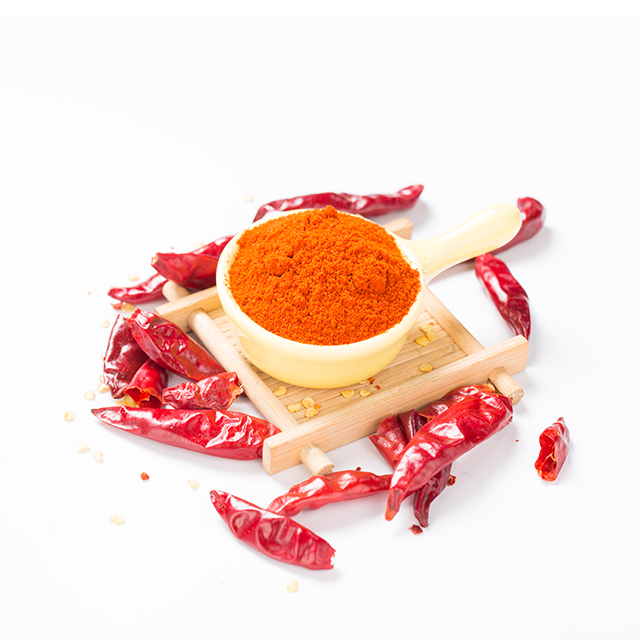Oct . 06, 2024 07:47 Back to list
dry chilies manufacturer
The World of Dry Chili Peppers A Manufacturer's Perspective
Dry chili peppers have long been a staple in culinary traditions around the globe. They are cherished not only for their spice but also for the depth and complexity they bring to various dishes. From Indian curries to Mexican salsas, the versatility of dried chilies can hardly be overstated. As a manufacturer in this dynamic industry, it is essential to understand both the market demand and the intricate processes involved in producing high-quality dry chili peppers.
Understanding the Market Demand
The global spice market has seen significant growth over the years, with dry chili peppers playing a pivotal role. As consumers become more adventurous and health-conscious, the demand for spices that enhance flavor without adding calories is on the rise. Moreover, the trend toward plant-based diets and ethnic cuisines has led to an increased interest in various chili varieties. Consequently, manufacturers are tasked with not only producing large quantities of dried chilies but also offering a wide range of options to cater to diverse culinary needs.
Selecting the Right Varieties
The initial step in the manufacturing process is selecting the right chili pepper varieties. Different types of chilies offer unique flavor profiles and heat levels. For instance, the rich, smoky flavor of ancho chilies can elevate a chocolate mole sauce, while the vibrant heat of cayenne pepper is perfect for adding spice to sauces and marinades. As a manufacturer, it is crucial to source high-quality fresh chilies that meet the specific requirements of both traditional and modern recipes.
Quality Control From Farm to Factory
Quality control is paramount in the dry chili manufacturing process. It begins at the farm, where careful attention is paid to the cultivation methods. Many manufacturers work directly with farmers to ensure the best harvesting practices are employed. Organic farming methods are becoming increasingly popular, reflecting consumer preferences for clean and sustainable food sources. After harvesting, chilies must be dried quickly and efficiently to prevent spoilage and maintain their vibrant color and flavor.
Once the chilies arrive at the factory, they undergo rigorous quality checks. This includes inspecting for moisture levels, color, and the presence of any contaminants. Manufacturers often utilize advanced drying techniques, such as hot air drying or freeze-drying, to ensure that the chilies retain their essential oils and flavors.
The Drying Process
dry chilies manufacturer

The drying process is where the magic happens. Different drying methods can yield varying results in terms of flavor, shelf-life, and overall quality. Traditional sun drying is still popular in many parts of the world, imparting a unique flavor that cannot be replicated by industrial methods. However, factory processing often employs more controlled methods that enhance consistency and product safety.
Once dried, the chilies can either be sold whole or processed into various forms, such as flakes, powders, or pastes. The choice of product will depend on market trends and consumer preferences. For example, chili powder has become a household staple, while flavored chili flakes are gaining popularity in gourmet cooking.
Packaging and Distribution
Effective packaging is crucial in retaining the quality and freshness of dried chilies. Manufacturers must invest in sturdy and airtight packaging solutions that protect the product from moisture, light, and air, which can degrade flavor over time. Furthermore, clear labeling with information about origin, variety, and heat level can enhance consumer trust and attract attention on store shelves.
Distribution channels also play a significant role in a manufacturer’s success. Collaborating with retailers, wholesalers, and online platforms can expand market reach and ensure that products are readily available to consumers worldwide. Building strong relationships with distributors is essential for navigating the complexities of the spice supply chain.
Embracing Sustainable Practices
As the world becomes more environmentally conscious, manufacturers are increasingly focusing on sustainable practices. This includes employing eco-friendly farming methods, reducing water usage during processing, and minimizing waste through responsible sourcing and packaging practices. By committing to sustainability, manufacturers can help protect the environment while also appealing to a growing segment of eco-conscious consumers.
Conclusion
The journey of dry chili pepper manufacturing is both challenging and rewarding. By understanding market demands, ensuring quality control, and embracing sustainability, manufacturers can thrive in this competitive industry. The passion for bringing the world’s flavors to life through dried chilies continues to inspire innovation and creativity, making the role of a dry chili manufacturer both significant and exciting in the culinary landscape.
-
Paprika Koral: Premium Red Pepper Powder for Flavor & Color
NewsSep.01,2025
-
Chili Powder-600: Aromatic & Flavorful Spice for Authentic Cuisine
NewsAug.31,2025
-
Dried Chipotle Pepper: Smoky Heat for Authentic Flavor
NewsAug.30,2025
-
Premium Crushed Chili Pepper for Intense Flavor & Heat
NewsAug.29,2025
-
Chili Powder-70: Intense Heat 70,000-80,000 SHU & Flavor
NewsAug.28,2025
-
Premium Dried Chili Pods | Authentic Flavor & Fiery Heat
NewsAug.27,2025

